- Author Matthew Elmers [email protected].
- Public 2023-12-16 21:49.
- Last modified 2025-01-24 09:17.

The article was posted on the website 2018-02-05
When a contingent of troops is deployed in a foreign country, then a main operational base is created, which needs protection in some form, since military operations are carried out in an environment, if not real threats, then at least with certain risks
If the task requires control over vast territories, then patrolling from the main operational base (GOB) is not enough, the military must have their own "boot on the ground" in key areas. Thus, forward operating bases (FOB) are created, smaller than the main one, but, nevertheless, capable of receiving a certain number of servicemen, as a rule, of no less reinforced company. The smallest (usually platoon-level) organized bases, known as fortified outposts or forward outposts, are set up in critical areas where a permanent military presence is required.
When the presence of a military contingent is necessary
It is understood that in a hostile environment all these bases must be protected. However, the meaning of this infrastructure lies in its ability to deploy patrols that could actively monitor the surrounding areas. On the other hand, if the threat level increases, then an increasing number of personnel are needed to protect the base itself, which increases the level of its staticity, and this, ultimately, makes the presence of soldiers almost useless, since the base becomes a self-defense unit that does not project what -or its own opportunities to the adjacent territory. Balancing stationary defenses with the ability to project active operations on the ground is the task of commanders. However, the widespread use of sensors and weapons systems in order to optimize protection capabilities allows the allocation of the maximum number of personnel to carry out active operations, which in turn makes it possible, as a rule, to reduce the level of direct threat to the base itself.
While outposts tend to be too small for a structured defense that really uses a wide range of technologies, GOBs and FOBs can rely on many different types of systems to increase the level of protection. At the same time, the number of personnel required to ensure the appropriate defensive capabilities is reduced, risks for subunits are minimized and their combat effectiveness is increased.
The choice of the place where the GOB or FOB will be built. depends on many factors and, as a rule, the defensive aspect is among the highest priorities. However, sometimes other considerations, often associated with the relationship with the local population, can lead to the choice of a place where the surrounding terrain provides shelter to a potential opponent, allowing him to approach the base within the range of a small arms shot. During recent operations, in many cases, the military was forced to build their FOBs in populated areas, and this is one of the most risky situations from the point of view of defense.
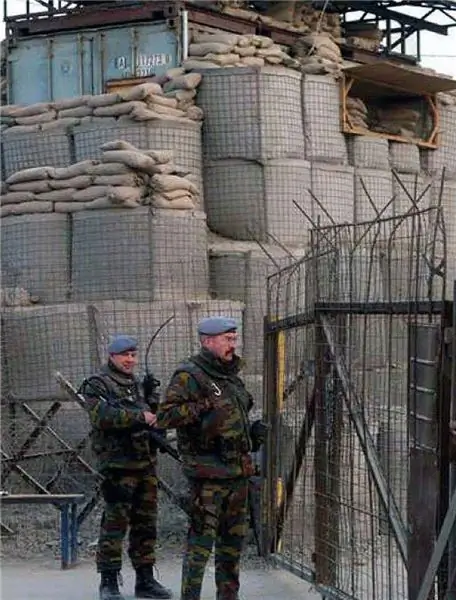
Organization of the correct forward operating base
Bases organized in open spaces, as a rule, have good visibility of the surrounding area, which makes it possible to determine in advance the signs of an impending attack even with the most low-tech sensor - the naked eye, while more advanced sensors with their maximum ranges make it possible to prepare much better for repelling it. Despite this, the risk of using missiles, artillery and mortars remains. Relationships with local communities represent another element of risk. Most missions, one of the tasks of which is to build and / or strengthen state institutions, require interaction with the military and police forces of the host country, and they are often involved in cooperation to protect the bases. In addition, the need to reduce the number of military personnel engaged in day-to-day logistics tasks, as well as to stimulate the local economy, often helps attract local labor. Local residents, both military and civilian, increase the risks, since in this case the potential threat is already in the camp. It is obvious that even for personnel not involved in reconnaissance and security tasks, risks persist, and in order to minimize them, not only a thorough threat assessment, appropriate techniques and training, good reconnaissance are needed, but also integrated systems that make it possible to increase the level of situational awareness and protection so that the base's defense command can neutralize any possible threat as quickly as possible.
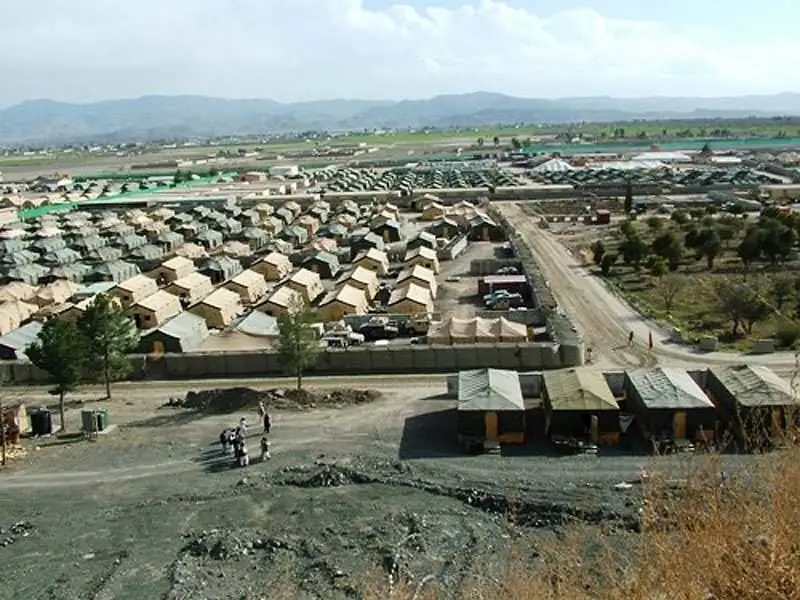
When organizing a base, perimeter protection is a priority. Once the site has been selected, it is usually the engineering units that take responsibility for deploying the security fence around the base. A simple hedge often does not provide sufficient protection, thus more stable systems are needed that can withstand small arms, as well as some types of rocket-propelled grenades. One of the standard technologies is the use of soil-filled enclosing elements of various types and sizes, which makes it possible to quickly create protective barriers with the help of earth-moving equipment. It is a much faster solution compared to sandbags, and playing with the filling material allows you to change the defense levels.

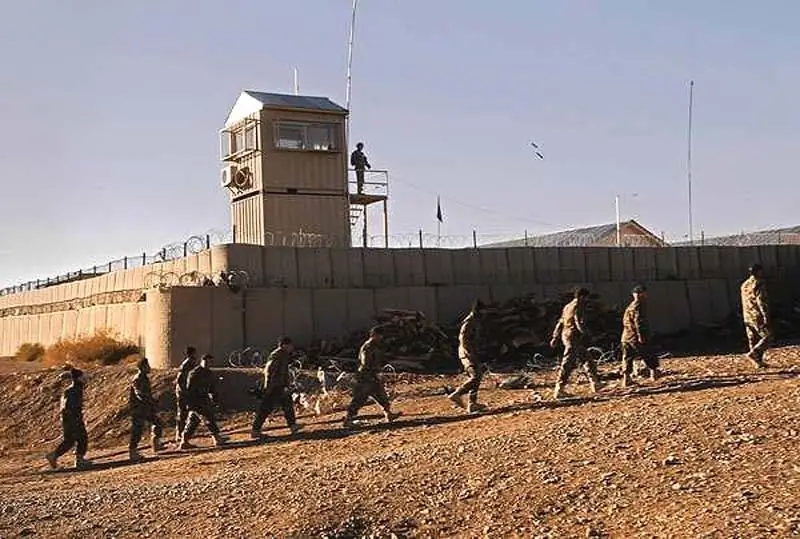
Barbed wire fencing, an inner wall of soil-filled gabions, and a metal guard tower - the standard passive protection of the base perimeter today
Essence of the question
Various solutions from many companies are available on the market today. Hesco Bastion is one of the key players in this area, producing three different types of systems. All of them are containers made of low-carbon steel wire mesh with vertical angular spiral fastenings, lined with non-woven polypropylene geotextile. The company was the first to start mass production of MIL Unit gabions, which came in different sizes; the largest had the designation MIL7, a height of 2, 21 meters, a cell measuring 2, 13x2, 13 meters, and the total length of one module was 27, 74 meters.
The next step was the production of MIL Recoverable gabions, which have the same characteristics, but feature a single removable locking rod that allows each section to be opened and the filler is emptied from the box. As a result, there are no problems with the transportation of structures. To disassemble the reinforcement, it is enough to pull out the locking rod and the sand spills out. And boxes and bags are folded and transported to a new location. (Standard MIL gabions take up 12 times the volume of folding MIL Recoverable). This reduces the logistical burden and negative environmental impact, as well as costs, since the systems can be reused. The RAID (Rapid In-theater Deployment) system is based on MIL Recoverable gabions that fit in a specially designed and manufactured ISO container, allowing quick deployment of pre-wired modules up to 333 meters long.
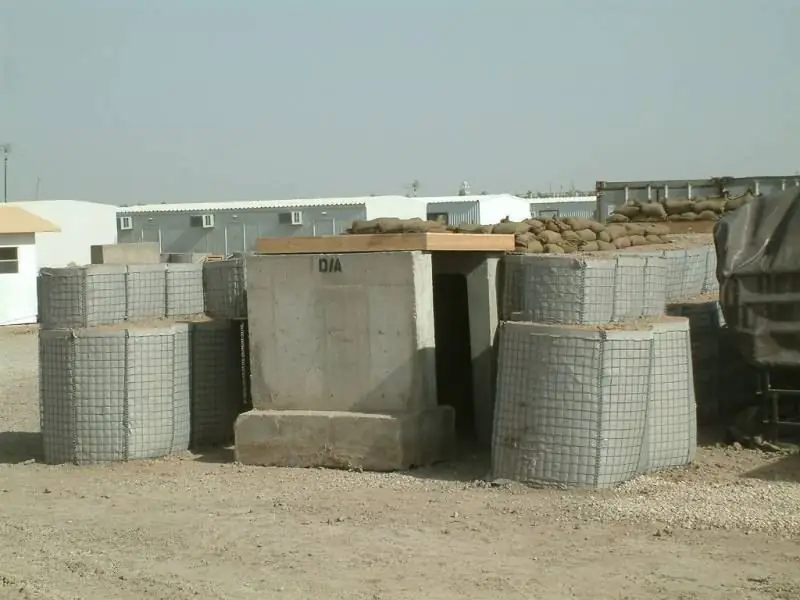
According to Hesco, the use of a RAID system can reduce the number of vehicles involved in the delivery of security barriers by 50%. DefenCell also offers a similar system, DefenCell MAC, which uses Maccaferri's gabion know-how and DefenCell's own geotextile know-how. The modules of this system are made of galvanized wire mesh panels connected by corner spirals and covered with ultraviolet resistant ultra-strong geotextiles. The MAC7 module is similar in size to MIL7 and requires 180 m3 of inert material to fill it. DefenCell also supplies non-metallic systems that reduce the risk of secondary fragmentation and ricochet depending on the filler material; according to the company, the system has demonstrated the ability to withstand 25 mm projectiles. These all-textile solutions can significantly reduce weight during the deployment phase, on average, metal mesh systems weigh five, and some even 10 times more.
All of these systems can also be used for other defensive tasks within the camp. Front-line FOBs, as a rule, need protection of the upper hemisphere, tanks filled with soil are installed on the roof of residential container modules, often as long as they can withstand. In larger camps, where the threat level is less, they can be used to provide some kind of secondary protection from shrapnel around residential areas and to create mine thrower shelters, since it is impossible to protect all residential areas. They can also be used to protect sensitive areas and equipment with weapons, for example, command posts, ammunition depots, fuel depots, etc.


The ability to stack two or more levels of gabions allows not only to increase the height of the protective perimeter, but also to build watchtowers used by personnel on guard to monitor the surrounding area and then respond to threats. Gabions can also be used to protect base checkpoints to prevent vehicles from approaching at high speeds. In order to further enhance the protection of entry points, various companies manufacture movable barriers that can be activated immediately when a threat appears.
Early detection of any possible threat makes it possible to significantly increase the level of protection, since this makes it possible to take coordinated actions using the appropriate executive means and at the same time give time for personnel not participating in active defense to take cover. If some areas of the terrain adjacent to the base allow opponents to approach it unnoticed, then unattended automatic sensors can be deployed along the proposed approach paths for warning.

The infrared passive sensor is part of the unattended Flexnet sensor system developed by the Swedish company Exensor (now part of Bertin)
Improving stationary defense
In Europe, one of the key players is the Swedish Exensor, which was acquired by the French Bertin in the summer of 2017. Its Flexnet system includes a set of optical, infrared, acoustic, magnetic and seismic unattended ground sensors with minimal power consumption, all networked together. Each sensor contributes to the formation of a silent, self-healing mesh network with optimized energy consumption, the operating time of which can be up to one year, all data is transmitted to the operational control center. Leonardo offers a similar UGS System kit based on a set of unattended ground sensors capable of detecting movement and other activity. The system dynamically creates and maintains a wireless mesh network capable of transmitting information and data to remote operations centers.
When only early warning is sufficient, only seismic-type systems can be used. The US military is currently deploying the Expendable Unattended Ground Sensor (E-UGS). These seismic sensors, the size of a coffee cup, can be installed in seconds and last up to six months, their algorithm only detects human steps and moving vehicles. The information is sent to a laptop, on the screen of which a map with installed sensors is displayed, when the sensor is triggered, its icon color changes and a sound signal is issued. The E-UGS sensor was developed by Applied Research Associates and has delivered over 40,000 of these devices to the military. Many companies have also developed such multipurpose systems as they can be used for border surveillance, infrastructure protection, etc. As already mentioned, in the defense of bases, they are used as a "trigger", warning of movement in some areas.

However, the main sensors, as a rule, are radars and optoelectronic devices. Radars can perform different tasks, but most often it is observation around the base, since surveillance radars have the ability to detect stationary and moving objects at a certain distance, including a person and vehicles. To confirm radar targets and positive identification, which is necessary before any kinetic action, optoelectronic systems are used, usually with two channels, day and night. The night channel is based either on an electro-optical converter or on a thermal imaging array, in some systems both technologies are integrated. However, radars can perform another task - to detect fire with indirect fire, for example, attacking mortar mines and unguided rockets. Artillery has not yet appeared in the arsenals of the rebels, but nothing prevents them from mastering this science in the future. Depending on their size and geometry, radar stations and optoelectronic sensors can be installed on high-rise buildings, towers or even airships. If necessary, if full circular coverage is not provided, then complex systems with a different set of sensors can be installed.
The Thales Squire enjoys a well-deserved reputation in the field of all-round radar. A radar with a low probability of intercepting continuous radiation with a maximum transmit power of 1 watt operates in the I / J band (3-10 GHz / 10-20 GHz) and can detect a pedestrian at a distance of 9 km, a small vehicle at 19 km and a tank at 23 km … At a distance of 3 km, the accuracy is less than 5 meters, and in azimuth less than 5 mils (0.28 degrees). The Squire portable radar system weighs 18 kg, while the operator control unit weighs 4 kg, which makes it possible to use it also in small POBs and combat posts. The Squire radar is also capable of detecting aircraft and drones flying at low altitudes at speeds up to 300 km / h. Recently, an upgraded version was presented, providing ranges of 11, 22 and 33 km for the above-mentioned types of targets and received additional infrared capabilities. It also has a scan speed of 28 degrees / s, the previous version has a scan speed of 7 degrees / s and 14 degrees / s. In addition, for continuous operation for 24 hours, instead of three batteries, only two are required, although this, as a rule, does not affect stationary operation in PHB and GOB. The Thales portfolio also includes the Ground Observer 80 and 20 models with a human detection range of more than 24 km and 8 km, respectively.
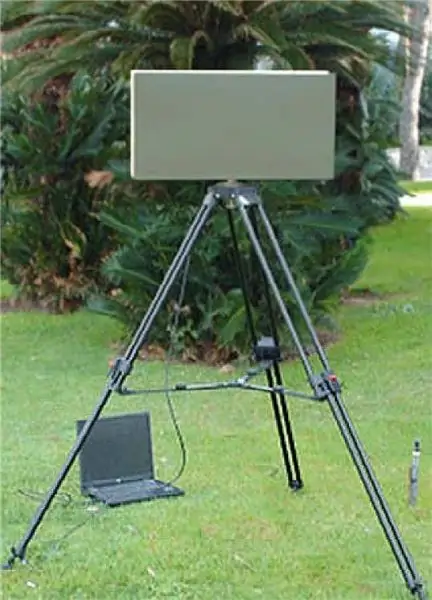
Leonardo is mainly engaged in the production of small mobile radars and offers the military its Lyra family, the youngest member of which is the Lyra 10. The number indicates the range of identification of a person, small vehicles are detected at a range of 15 km, and large ones at 24 km. Coherent Pulse-Doppler X-band radar can detect helicopters and drones at a distance of 20 km.
The German company Hensoldt, a developer and manufacturer of sensor systems, has a Spexer 2000 radar in its portfolio. An X-band pulse-Doppler radar with AFAR (Active Phased Antenna Array) technology with electronic scanning of 120 degrees and optional circular rotation from a mechanical drive is capable of detecting a person on range of 18 km, light vehicles at 22 km and mini-drones at 9 km. The Israeli company Rada, for its part, offers three-dimensional perimeter surveillance radars capable of detecting, classifying and tracking pedestrians, vehicles, as well as slowly flying small-sized manned and unmanned vehicles. Universal pulse-Doppler programmable radars pMHR, eMHR and ieMHR with AFAR, operating in the S-band, provide increased detection ranges of people and vehicles, respectively 10 and 20 km, 16 and 32 km and 20 and 40 km, each antenna covers a sector of 90 ° …
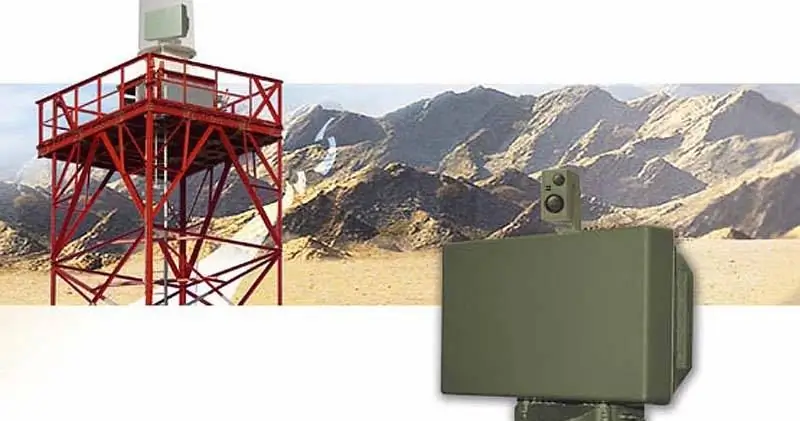
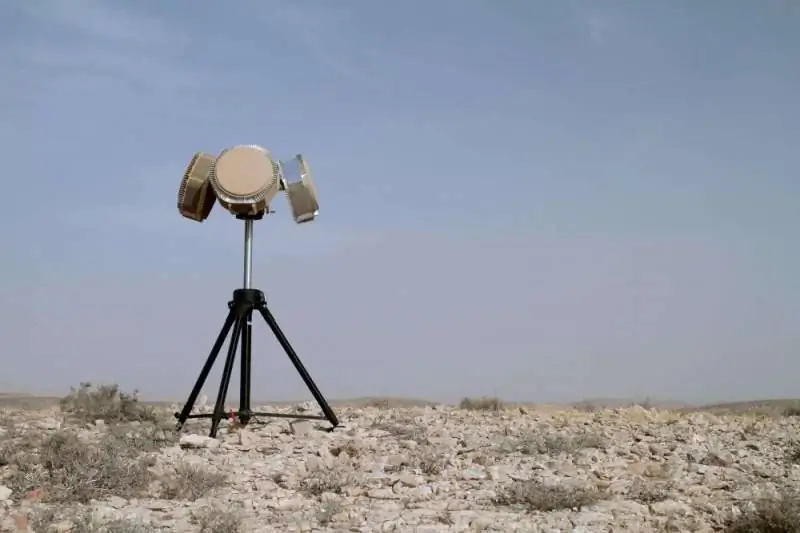
Another Israeli company, IAI Elta, has developed the ELM-2112 family of continuous surveillance radars, six of the seven also for ground use. Radars operate in X- or C-bands, detection ranges from 300 to 15,000 meters for a moving person and up to 30 km for a moving vehicle. Each fixed flat antenna array covers 90 °, while multi-beam technology achieves instant all-angle coverage.
The British company Blighter has developed the B402 CW radar with electronic scanning and frequency modulation, operating in the Ku-band. This radar can detect a walking person at a range of 11 km, a moving car at 20 km, and a large vehicle at 25 km; the main radar covers the 90 ° sector, each auxiliary unit covers another 90 °. The American company SRC Inc offers its SR Hawk Ku-band pulse-Doppler radar, providing 360 ° continuous coverage; its improved version (V) 2E guarantees a detection range of 12 km for one person, 21 km for small cars and 32 km for large vehicles. In this section, only a few of the many surveillance radars that can be used to protect a GOB or FOB have been presented.
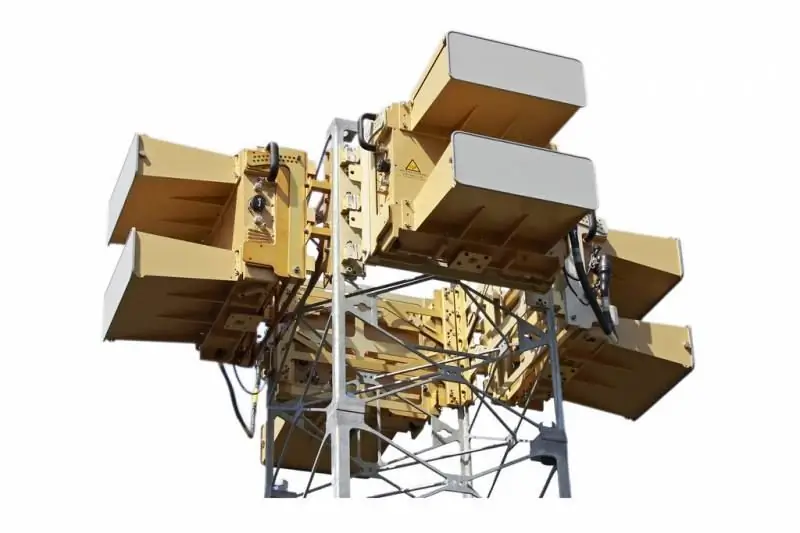
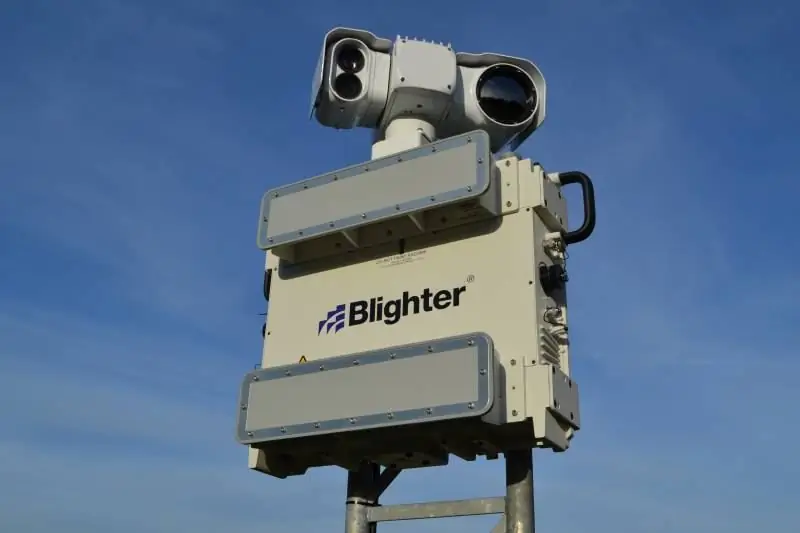
From radars to infrared and acoustic detectors
Although best known for its optocoupler systems, FLIR has also developed the Ranger family of surveillance radars, ranging from the R1 short-range radar to the R10 long-range variant; the number indicates the approximate detection range of a person. Undoubtedly, larger radars with longer range can be used to protect bases, but it is worth considering the cost of their operation. To detect attacking shells, as a rule, specialized artillery radars are needed, while air defense radars connected to special executive systems provide protection against unguided missiles, artillery shells and mines, but a complete description of these systems is beyond the scope of this article.
While radars provide detection of potential intruders, other sensors are useful in the event of an attack on a base; the aforementioned specialized artillery and mortar air defense radars belong to this category. However, several sensor systems have been developed to identify sources of direct fire. The French company Acoem Metravib has developed the Pilar system, which uses sound waves generated by the source of a small arms shot to localize it in real time and with good accuracy. In the base protection version, it can include from 2 to 20 acoustic antennas connected to each other. The computer displays the azimuth, elevation and distance to the source of the shot, as well as the GPS grid. The system can cover an area of up to one and a half square kilometers. A similar system, known as ASLS (Acoustic Shooter Locating System), was developed by the German company Rheinmetall.

While the aforementioned systems are based on microphones, the Dutch company Microflown Avisa has developed its AMMS system based on the AVS (Acoustic Vector Sensor) acoustic vector registration technology. AVS technology can not only measure sound pressure (a typical measurement produced by microphones), but it can also output the acoustic velocity of particles. The single sensor is based on Mems (microelectromechanical systems) technology and measures air velocity through two tiny resistive platinum strips heated to 200 ° C. When the air flow passes through the plates, the first wire cools a little and, due to the transfer of heat, the air receives a certain part of it. Consequently, the second wire is cooled by the already heated air and. thus, it cools less than the first wire. The temperature difference in the wires changes their electrical resistance. There is a voltage difference proportional to the acoustic velocity, and the effect is directional: when the air flow turns, the temperature difference area also turns. In the case of a sound wave, the air flow through the plates changes in accordance with the waveform and this leads to a corresponding change in voltage. Thus, a very compact (5x5x5 mm) AVS sensor weighing several grams can be manufactured: the sound pressure sensor itself and three orthogonally placed Microflown sensors at one point.
The AMMS (Acoustic Multi-Mission Sensor) device has a diameter of 265 mm, a height of 100 mm and a mass of 1.75 kg; it can detect a shot fired from a distance of 1500 meters, depending on the caliber, with a range error of 200 meters, providing an accuracy of less than 1.5 ° in direction and 5-10% in range. AMMS is at the heart of the base protection system, which is based on five sensors and can detect small arms fire from any direction up to 1 km and indirect fire up to 6 km; depending on the terrain and the placement of the range sensors, there may be more typical ones.
The Italian company IDS has developed a radar for detecting enemy fire, ranging from 5, 56-mm bullets and ending with rocket-propelled grenades. The HFL-CS (Hostile Fire Locator - Counter Sniper) radar with 120 ° coverage operates in the X-band, so three such radars are needed for all-angle coverage. The radar, when tracking a fire source, measures radial speed, azimuth, elevation and range. Another specialist in this area, the American company Raytheon BBN, has already developed the third version of its Boomerang shot detection system based on microphones. It was widely used in Afghanistan, however, like most of the already mentioned systems, which took part in many military operations of Western European countries.

A look at optronics
As for optoelectronic sensors, the choice is huge. Optoelectronic sensors, in fact, can be of two types. Surveillance sensors, usually with a circular coverage with the ability to track changes in the pixel pattern, after which a warning is issued, and longer range systems with a limited field of view, in most cases used to positively identify targets detected by other sensors - radar, acoustic, seismic or optronic. The French company HGH Systemes Infrarouges offers its family of Spynel all-round vision systems based on thermal imaging sensors. It includes sensors of various types, both uncooled models, Spynel-U and Spynel-M, and cooled ones, Spynel-X, Spynel-S and Spynel-C. Models S and X operate in the mid-wave region of the IR spectrum.and the rest are in the long-wavelength region of the IR spectrum; the size of the devices and their scanning speed vary from model to model, as well as the distance of human detection, from 700 meters to 8 km. The French company is adding Cyclope intrusion detection and tracking software to its sensors, capable of analyzing high-resolution images captured by Spynel's sensors.
In September 2017, HGH added an optional laser rangefinder to the Spynel-S and -X devices, which makes it possible not only to determine the azimuth, but also the exact distance to the object, thus allowing target designation. As for optoelectronic devices with a longer range, they are usually installed on a panoramic head and are often connected to all-round sensors. Thales Margot 8000 is one example of such a device. On a gyro-stabilized panoramic head in two planes, a thermal imager operating in the mid-wave infrared region of the spectrum and a daytime TV camera, both of them with continuous magnification, as well as a laser rangefinder with a range of 20 km, are installed. As a result, the Thales Margot8000 system is capable of detecting a person at a distance of 15 km.
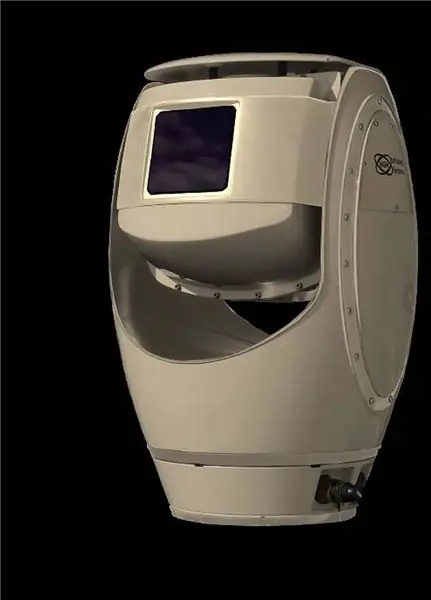
The Z: Sparrowhawk from Hensoldt is based on an uncooled thermal imager with fixed or magnifying optics, a daytime camera with x30 optical zoom, mounted on a turntable. The detection range of a person with a thermal imager is 4-5 km, and of vehicles - 7 km. Leonardo offers its Horizon medium wave thermal imager, which uses the latest focal plane sensor technology to meet the demands of long-range observation. Sensors and continuous optical zoom of 80-960 mm guarantee the detection of a person at a distance of more than 30 km and a vehicle of almost 50 km.
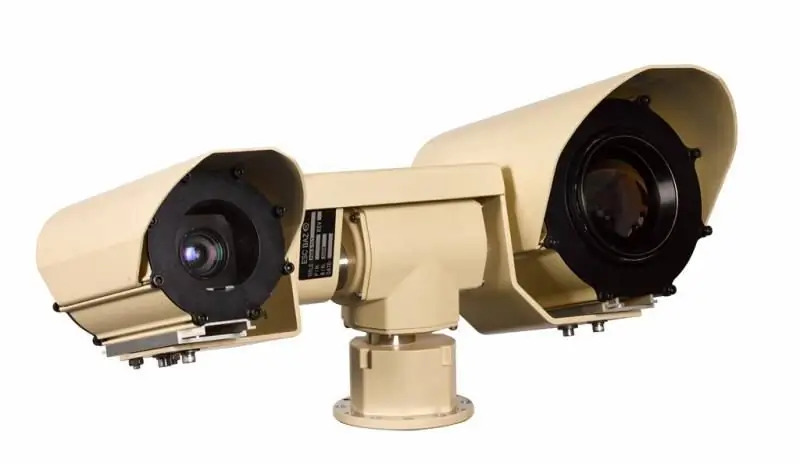
The Israeli company Elbit System has developed several products to ensure the security of critical infrastructure, which can also be used to protect FOB and GOB. For example, the LOROS (Long Range Reconnaissance and Observation System) system consists of a daytime color camera, a daytime black and white camera, a thermal imaging camera, a laser rangefinder, a laser pointer, and a monitoring and control unit. Another Israeli company, ESC BAZ, also offers several systems for similar tasks. For example, its Aviv short- to medium-range surveillance system is equipped with an uncooled thermal imager and an ultra-sensitive Tamar surveillance camera with a wide-field-of-view color channel, a narrow-field visible spectrum channel and a mid-wave infrared channel, all with x250 continuous optical zoom.
The American company FLIR, which also manufactures radars, offers integrated solutions. For example, CommandSpace Cerberus, a trailer-mounted system with a 5.8-meter mast to which various radar and optoelectronic systems can be attached, or the Kraken van-mounted kit. designed to protect FOB and forward guard posts, which also includes remotely controlled weapons modules. As for optoelectronic systems, the company offers a line of Ranger devices: cooled or uncooled thermal imagers of different ranges, or CCD cameras for low illumination with high magnification lenses.
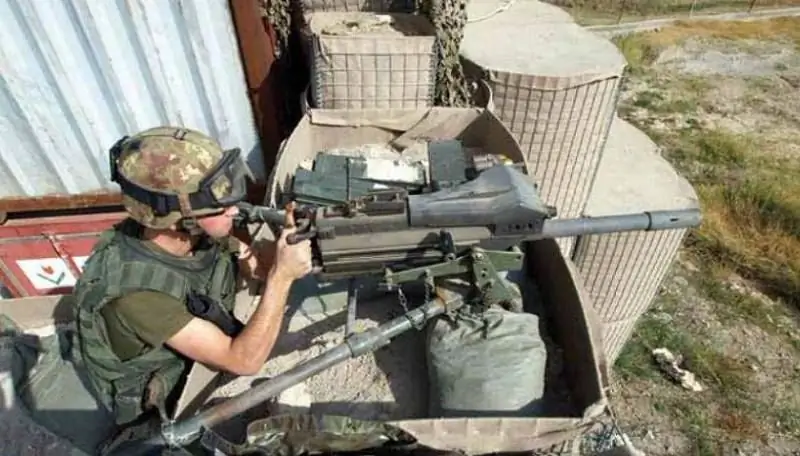
Back to arms
As a rule, the protection of bases is provided by soldiers with personal weapons and calculations of weapon systems, including machine guns of 12, 7-mm caliber, 40-mm automatic grenade launchers, large-caliber grenade launchers and, finally, anti-tank missiles, and small and medium mortars are used as indirect fire weapons. and large calibers. Some companies, such as Kongsberg, offer remotely controlled weapons modules that are built into containers or mounted on parapets. The purpose of such decisions is to reduce the need for human resources and not expose soldiers to enemy fire; however, at the moment they are not so popular. For large bases, that is, those with a runway, the idea of patrolling a large perimeter by ground-based robotic systems, including armed ones, is being considered. Anti-UAV systems should also be added to the defense systems, as some groups use them as flying IEDs.
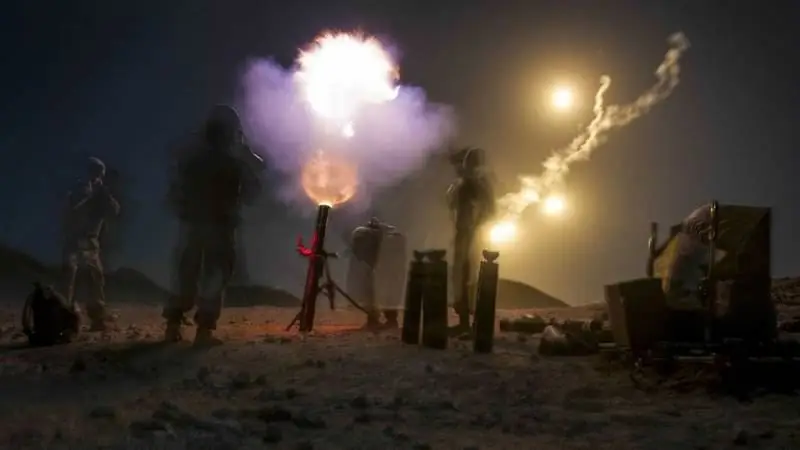
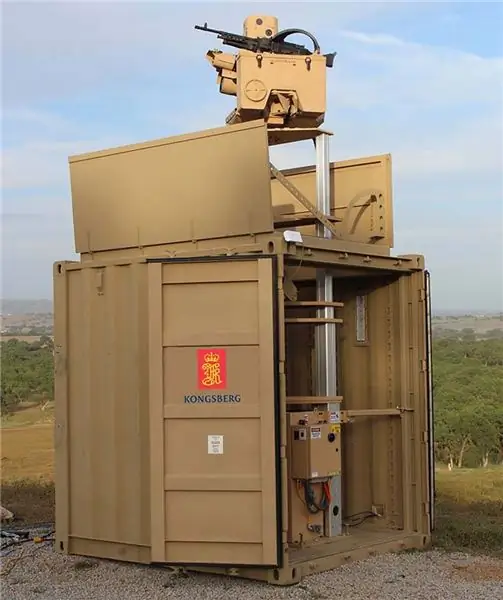
Integration is a key issue for all of the aforementioned systems, however. The goal is to link all sensors and actuators to the base center of defensive operations, where personnel responsible for defending the base can assess the situation in near real time and take appropriate action. Other sensors, such as mini UAVs, can also be integrated into such a system, while information and images from other sources can be used to fill the operational picture. Many key players have already developed such solutions, and some of them have been deployed in the military. Interaction between countries is another key issue. The European Defense Agency has launched a three-year project on the future interoperability of base protection systems FICAPS (Future Interoperability of Camp Protection Systems). France and Germany agreed on common norms of interaction on existing and future base defense systems; the work done will form the basis for the future European standard.






